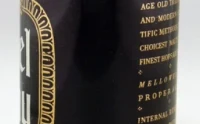So, the nostalgia machine is cranking up again. This time, the target is Thunderbirds, the old puppet show that’s apparently turning 60. And offcourse, the marketing departments are pulling out all the stops: 4K restorations in cinemas, a big toy exhibition, a fancy celebrity lunch at BAFTA. It’s all very neat, very packaged, very… corporate.
But under the glossy surface of this anniversary tour, there’s a much messier, much more human story. While the industry pats itself on the back by unveiling a special seat for co-creator Sylvia Anderson, her own daughter, Dee, is practically screaming from the rooftops, trying to get people to remember her mother’s name.
Think about that for a second. They’re "honoring" a woman whose contribution has been so systematically downplayed that her own child has to launch a public campaign for credit. It’s a perfect little microcosm of how this industry works. The man, Gerry Anderson, gets remembered as the genius who conceived of "International Rescue." The woman, Sylvia, who created the characters, who gave them their personalities, who voiced Lady Penelope and made her an icon, gets a posthumous chair.
Give me a break.
The Glorious Imperfection They Keep Trying to "Fix"
The Soul in the Wires
Let’s be real. Nobody remembers Thunderbirds for its high-concept premise. We remember it for the characters. We remember the stoic Tracy brothers, the impossibly chic Lady Penelope, and her rough-around-the-edges butler, Parker. Sylvia Anderson didn't just create characters; she breathed life into those wooden puppets. She was the soul in the wires. Gerry’s concept was the skeleton, but Sylvia’s work was the heart, and that’s the part that’s kept beating for six decades.
I remember watching the re-runs as a kid. The way the puppets’ heads would jerk, the visible strings, the slightly-too-big hands. It was janky. It was imperfect. And that was its magic. You could feel the human effort behind it, the painstaking work of the "supermarionation" process happening on some dreary trading estate in Slough. You could practically smell the model glue and the ozone from the studio lights.
That’s what the modern reboots never get. The 2004 live-action film was an abomination. A complete creative failure. No, ‘failure’ doesn't cover it—it was a soulless desecration of a beloved memory. The 2015 CGI version is better, I guess, but it’s still too slick, too clean. It’s a digital product, not a piece of handcrafted art. It lacks the essential weirdness, the uncanny valley charm that made the original so captivating. It ain’t the same.
The industry is obsessed with sanding down the rough edges, but sometimes the rough edges are the whole point.
From DIY Glory to Minor League Obscurity
The Great Tracy Island Fiasco

Of course, you can’t talk about Thunderbirds without talking about the merchandise. The franchise was a commercial juggernaut from day one, with Dinky toys and cereal box giveaways. But the peak of this madness, the absolute zenith of its cultural power, was the great Tracy Island toy shortage of 1992.
For anyone under 40, it’s hard to explain the sheer hysteria. This one plastic playset became the most coveted object on the planet for an entire Christmas season. Parents were literally fighting in the aisles. The demand was so insane, the supply so pathetic, that the BBC kids’ show Blue Peter aired a segment on how to build your own out of toilet paper rolls, cardboard boxes, and sticky-back plastic.
And people did it. Thousands of kids got a homemade Tracy Island that year, and it was probably better than the real thing. It was a moment of pure, unadulterated fan passion, a grassroots response to a corporate screw-up. It showed that the love for this show was real, something that couldn't just be manufactured and put on a shelf. It was a phenomenon that even the BBC, with its six million weekly viewers for the 2000s re-run, couldn’t fully quantify. It was lightning in a bottle, and the brand managers have been trying to catch it again ever since.
And honestly, you just have to laugh at where it’s all ended up.
I was digging around and found the most surreal piece of information. You want to know what the "Thunderbirds" brand means in 2024? It’s the name of a minor league hockey team in Springfield. The AHL affiliate for the St. Louis Blues. I’m not making this up. They just assigned a forward named Matt Luff and a defenseman named Corey Schueneman to the Springfield Thunderbirds. Imagine Scott Tracy lacing up a pair of skates. It’s so absurd, so completely disconnected from the source, that it’s almost poetic. The name is just a piece of intellectual property now, a string of letters to be slapped on whatever needs a bit of brand recognition, and...
Then again, maybe I'm the crazy one here. Maybe a hockey team is exactly what a 60-year-old puppet show franchise deserves. A slow slide into comfortable, B-list obscurity. It’s better than another terrible movie, right?
Don't Call It a Tribute, It's a Liquidation Sale
F.A.B. - For A Buck
So here we are. 60 years later. We have a museum full of old toys, a daughter fighting for her mother’s legacy, a cinema re-release that will make a modest amount of money, and a hockey team in Massachusetts.
The official line is that this is a celebration of a television classic. A tribute to pioneering creators. But what is it really? It feels more like a final, concerted effort to wring the last drops of cash and cultural relevance out of a brand before it fades completely. They’re selling us our own memories back, polished up in 4K.
The irony of celebrating Sylvia Anderson with a chair, while simultaneously proving her daughter’s point about her erasure, is apparently lost on everyone holding a champagne flute at BAFTA. They’ll make their speeches, smile for the cameras, and talk about the "enduring magic" of the show. But the real magic wasn't in the rockets or the pink Rolls-Royce. It was in the messy, complicated, human effort behind it all. An effort that, it seems, is getting harder and harder to see.
So It's About the Money. Got It.
At the end of the day, all the talk about art, legacy, and honoring creators is just noise. This is a business. The 60th anniversary isn't a party; it's a quarterly earnings strategy. And the most famous catchphrase from the show, "FAB," might as well stand for "Find Another Buck." Because that’s all this is about now.
Reference article source:









